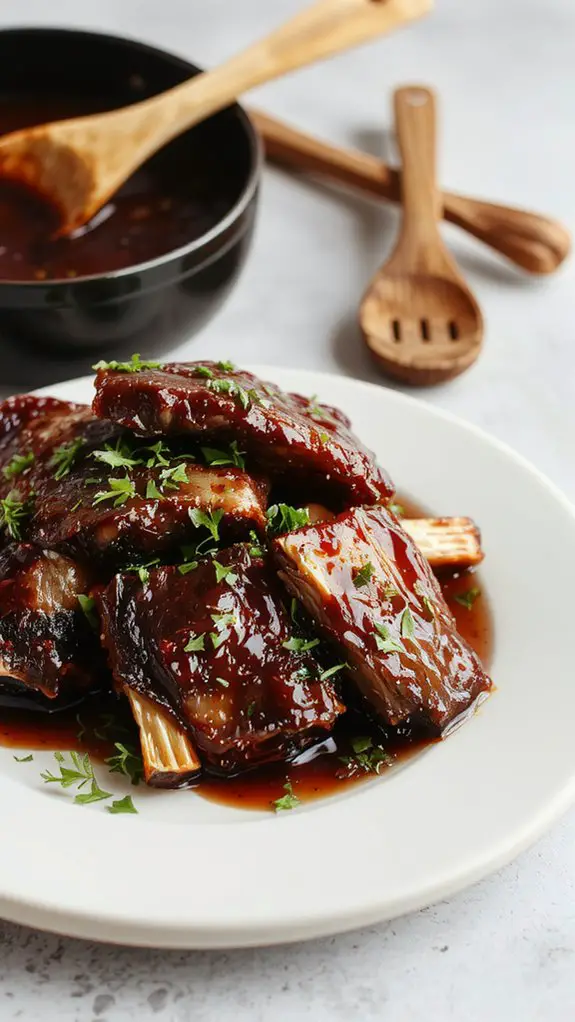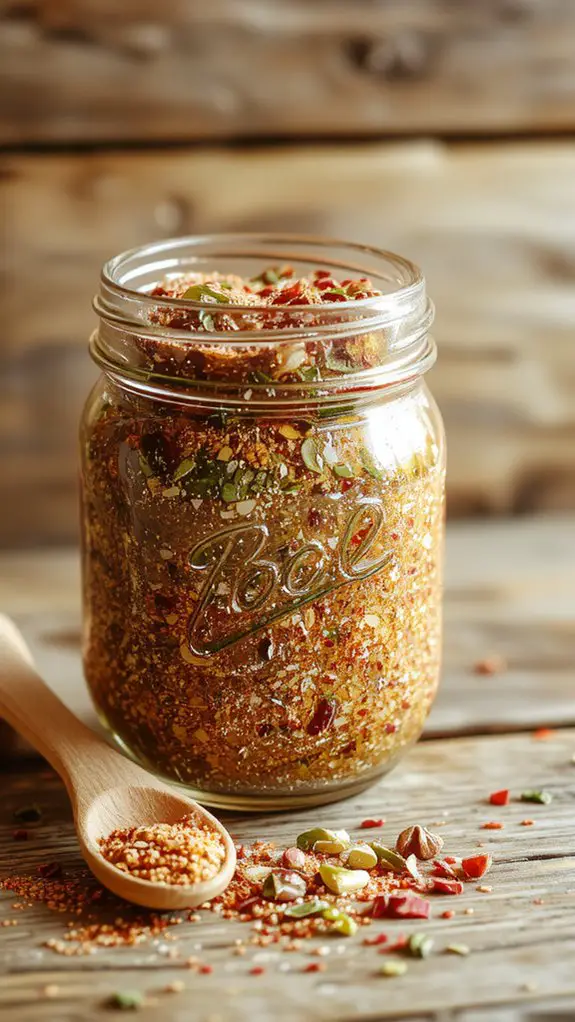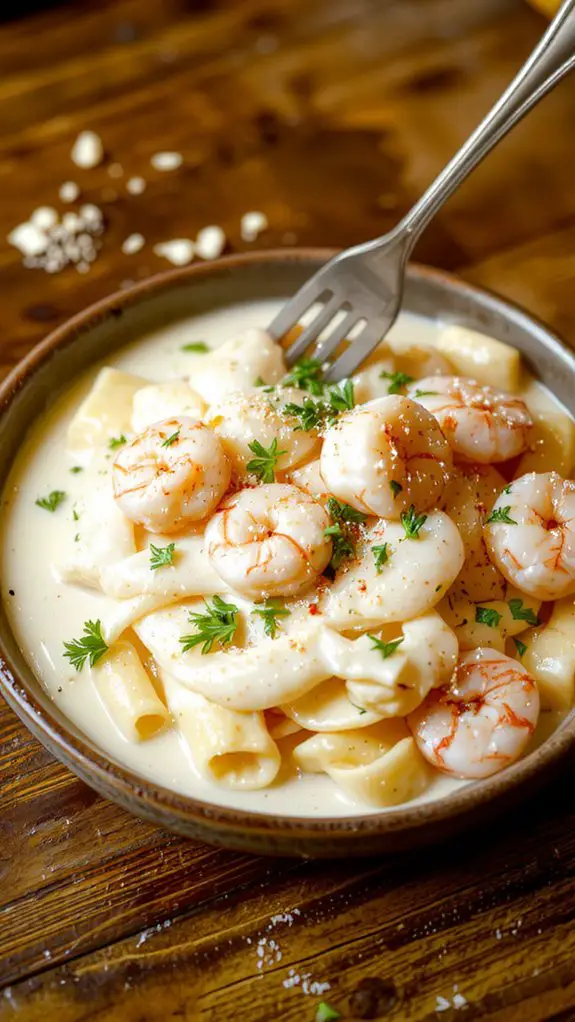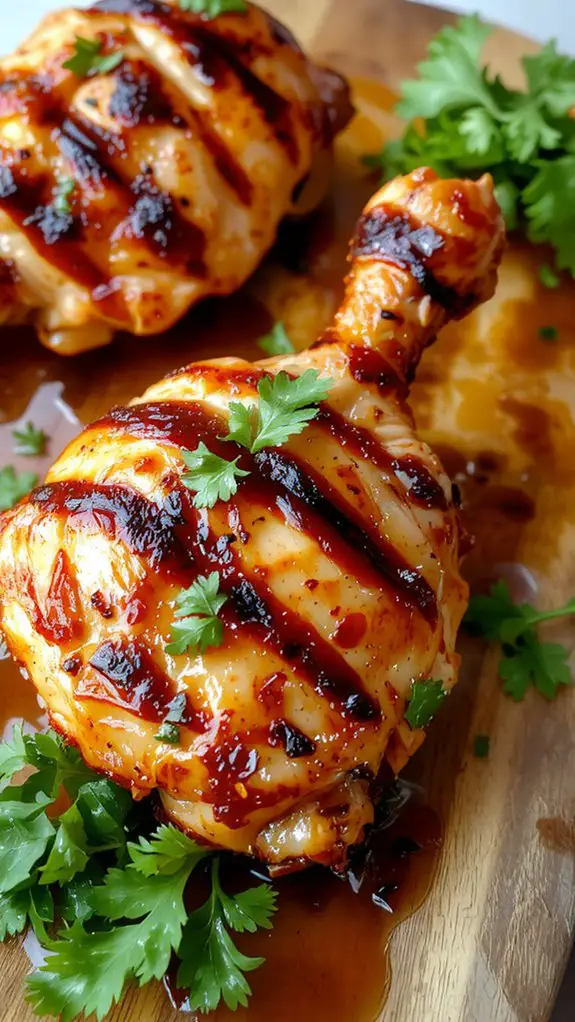Recipe
Let me tell you right now—this recipe for homemade short ribs is a game-changer. We’re talking melt-in-your-mouth tender beef that’s rich, savory, and downright addictive.
The secret? Slow-braising these beauties with a mix of aromatic herbs, garlic, and a touch of red wine to build layers of flavor that’ll have your kitchen smelling like a Michelin-starred restaurant.
I’ve made this countless times for family dinners, and it’s always the hero of the table—fork-tender, with a velvety sauce that begs to be soaked up with crusty bread or mashed potatoes.
Trust me, once you try this method, you’ll never look at short ribs the same way again. Let’s get cooking—this is comfort food at its finest.
Ingredients
For tender, fall-off-the-bone short ribs, quality ingredients make all the difference. Opt for bone-in ribs—they add depth to the sauce as they cook. A bold red wine and aromatic veggies build layers of flavor, while a touch of sweetness balances the richness.
- Bone-in beef short ribs (4 lbs): The marbling and connective tissue break down into melt-in-your-mouth goodness. *Substitute boneless ribs if needed, but reduce cooking time slightly.*
- Dry red wine (2 cups): Cabernet Sauvignon or Merlot adds acidity and depth. *No wine? Use beef broth mixed with 1 tbsp balsamic vinegar.*
- Yellow onion (1, chopped): Sweats down to sweet, savory perfection.
- Carrots (2, chopped): Essential for balancing richness with natural sweetness.
- Garlic (4 cloves, minced): Non-negotiable—fresh only for that punchy aroma.
- Tomato paste (2 tbsp): Deepens the sauce’s umami. *Don’t skip this!*
- Beef broth (3 cups): Low-sodium lets you control the seasoning.
- Fresh thyme (3 sprigs): Earthy brightness. *Dried works (1 tsp), but fresh is ideal.*
- Bay leaves (2): Lends subtle complexity—remove before serving.
- Brown sugar (1 tbsp): Just enough to caramelize and balance acidity.
- Olive oil (2 tbsp): For searing—avoids sticking and adds richness.
- Kosher salt & black pepper: Season generously at every stage.
*Pro tip*: Sear the ribs in batches to avoid steaming—crispy edges = more flavor. Garnish with chopped parsley for a fresh finish.
How to Make the Best Braised Red Wine Short Ribs
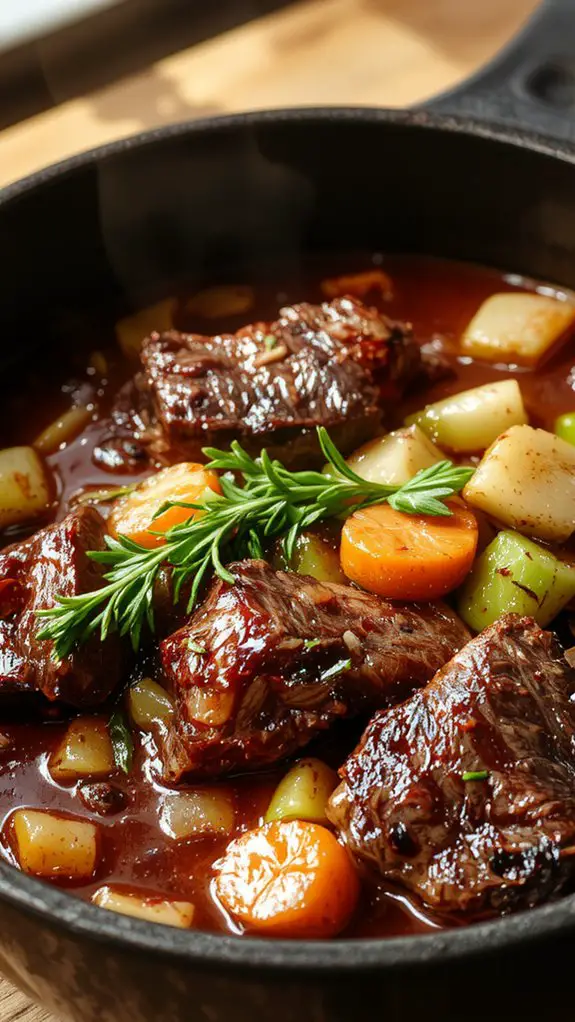
- Remove the short ribs and set aside. This prevents overcooking while you prepare the braising liquid.
- Sauté chopped onions, carrots, and celery in the same pot. Cooking the vegetables in the residual fat from the ribs adds layers of flavor to the dish.
- Add minced garlic and cook until fragrant. Garlic is delicate, so just a minute or two is enough to release its aroma without burning.
- Deglaze the pot with red wine, scraping up any browned bits. These bits (called fond) are packed with flavor, and the wine helps incorporate them into the sauce.
- Simmer the wine until reduced by half. This concentrates the wine’s flavor, ensuring your sauce isn’t too thin or boozy.
- Add beef broth, tomato paste, and fresh herbs (like thyme and rosemary). The broth provides the liquid for braising, while the tomato paste and herbs add richness and complexity.
- Return the short ribs to the pot, nestling them into the liquid. Make sure they’re mostly submerged so they cook evenly and stay tender.
- Cover the pot and transfer it to the preheated oven. Braising low and slow breaks down the tough connective tissue, resulting in melt-in-your-mouth ribs.
- Cook for 2.5 to 3 hours, checking for tenderness. The meat should pull apart easily with a fork—overcooking can make it dry, so keep an eye on it.
- Remove the short ribs and skim any excess fat from the sauce. This gives you a smoother, more refined sauce to serve with the ribs.
- Optional: Reduce the sauce on the stovetop for a thicker consistency. Simmer uncovered for 10–15 minutes if you prefer a richer, more concentrated sauce.
- Serve the short ribs with the sauce and your choice of sides. Mashed potatoes, polenta, or roasted vegetables all pair beautifully with this dish.
- Let the ribs rest for 10 minutes before serving. This allows the juices to redistribute, ensuring every bite is moist and flavorful.
Nutrition
Short ribs are a rich and flavorful cut of beef, but they also come with a significant nutritional profile. Here’s a breakdown of the key nutrients per serving:
| Nutrient | Amount per Serving |
|---|---|
| Calories | 450 |
| Protein | 35g |
| Fat | 30g |
| Carbohydrates | 5g |
| Fiber | 1g |
| Sodium | 800mg |
Chef Tips
The key to perfect short ribs lies in patience and the right techniques. I always sear them first for a deep crust, then braise low and slow—don’t rush it.
Deglaze with red wine for richness, and skim excess fat later. Let them rest before serving; they’ll be tender every time.
Trust me, these small steps make all the difference. Now go impress your guests!
Frequently Asked Questions
Can I Use a Slow Cooker Instead of Braising?
Yes, I’d use a slow cooker instead of braising. I’d sear the short ribs first for flavor, then cook them low and slow with my chosen liquids and seasonings for 6-8 hours until tender. It’s super convenient!
How Long Can I Store Cooked Short Ribs?
I’d store cooked short ribs in the fridge for up to 4 days if they’re sealed tightly. For longer storage, freeze them; they’ll last 2-3 months. Just make sure they’re cooled properly before refrigerating or freezing.
Can I Substitute Beef Broth for Red Wine?
Yes, I can substitute beef broth for red wine—it’ll still add richness but miss the wine’s depth. I’d use the same amount and maybe add vinegar or tomato paste for tanginess to mimic wine’s acidity.
What Sides Pair Best With Short Ribs?
I’d recommend creamy mashed potatoes, garlic Parmesan roasted veggies, or polenta—they’re rich and soak up the short rib juices perfectly. A crisp salad or buttery bread’s also great for balancing the hearty flavors.
Can I Use Boneless Short Ribs?
I can use boneless short ribs if I want a quicker cook, but they’ll lack the rich flavor and tenderness bone-in ribs give. I’ll adjust cooking time since they’re leaner and won’t need as long to braise.

